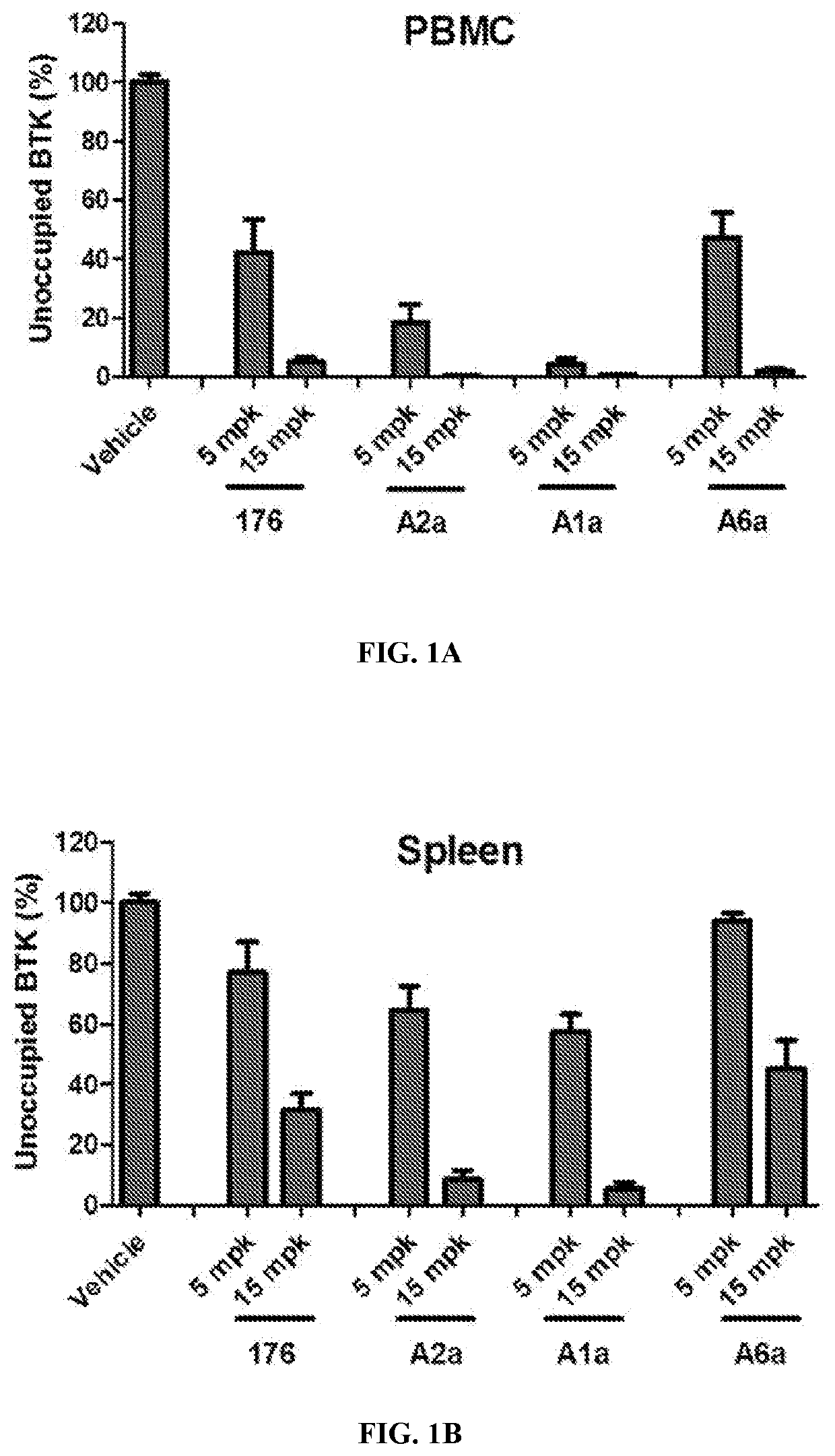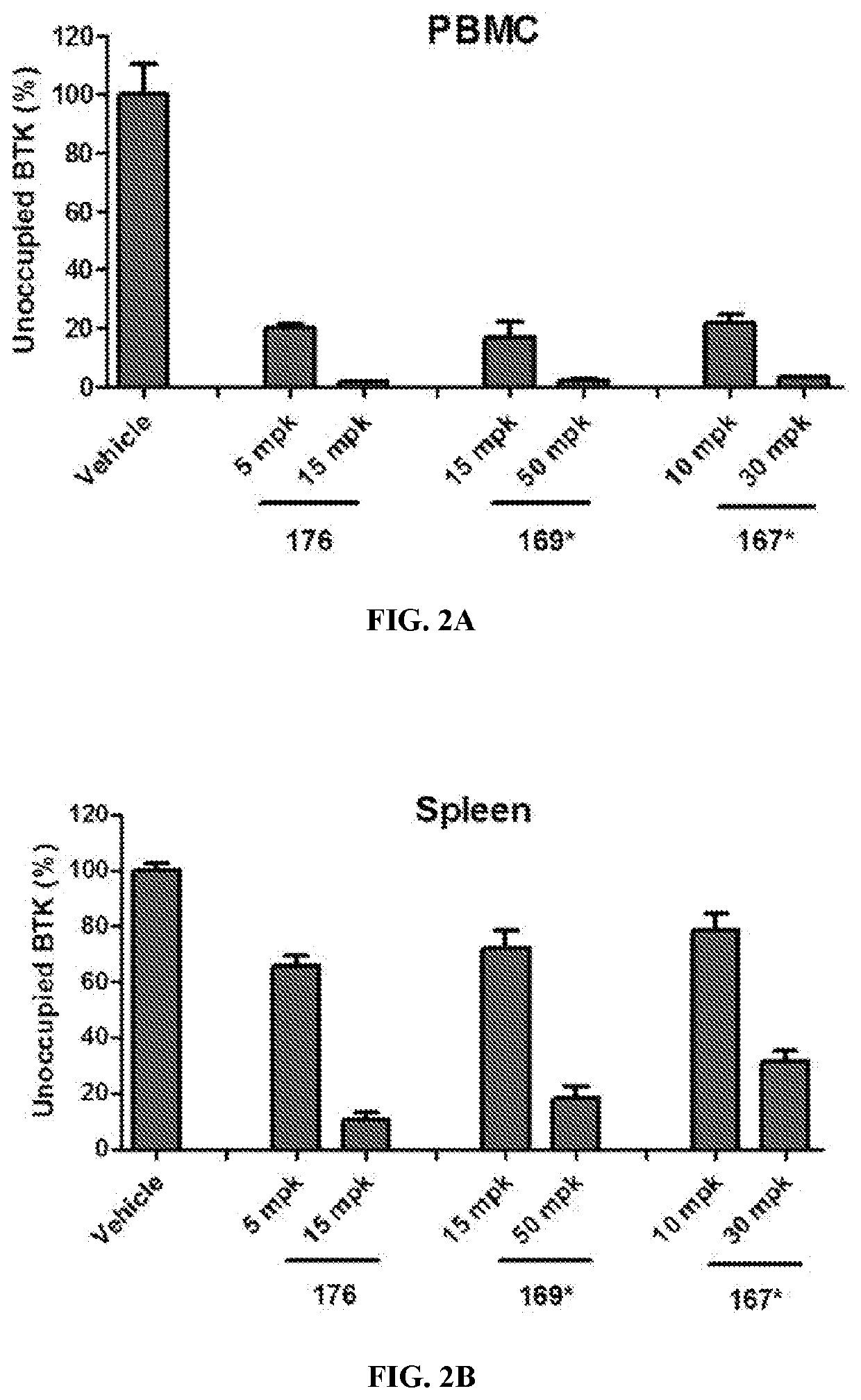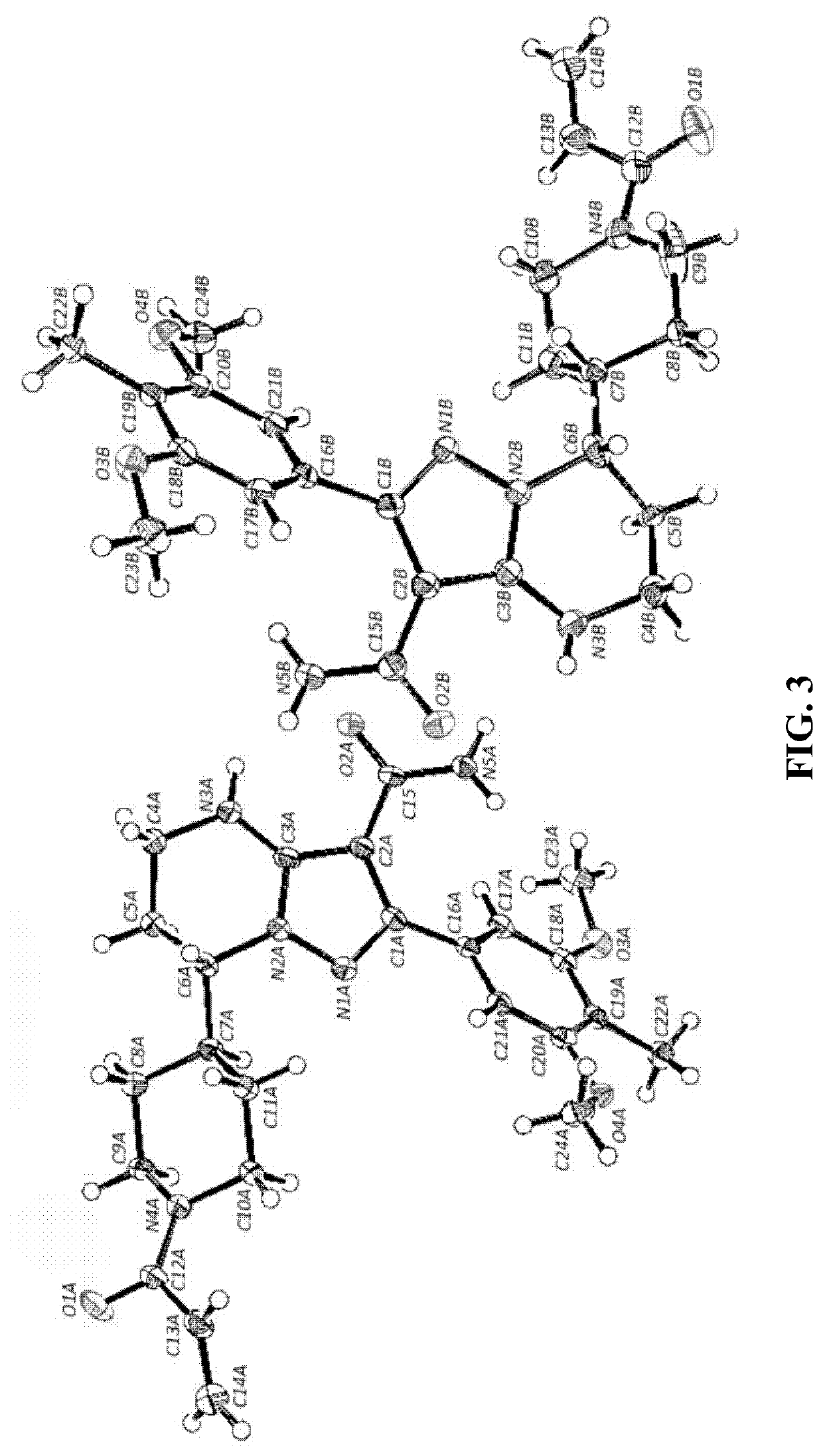Btk inhibitors with improved dual selectivity
a dual selectivity and inhibitory technology, applied in the field of btk inhibitors with improved dual selectivity, can solve the problems of dramatic cutaneous toxicity, adverse effects, bleeding, diarrhea, etc., and achieve the effects of improving or good dual selectivity of btk, improving cellular potency, oral bioavailability and pharmacodynamic activity
- Summary
- Abstract
- Description
- Claims
- Application Information
AI Technical Summary
Benefits of technology
Problems solved by technology
Method used
Image
Examples
examples
[0073]The examples below are intended to be purely exemplary and should not be considered to be limiting in any way. Efforts have been made to ensure accuracy with respect to numbers used (for example, amounts, temperature, etc.), but some experimental errors and deviations should be accounted for. Unless indicated otherwise, temperature is in degrees Centigrade. Reagents were purchased from commercial suppliers such as Sigma-Aldrich, Alfa Aesar, or TCI, and were used without further purification unless indicated otherwise.
[0074]Unless indicated otherwise, the reactions set forth below were performed under a positive pressure of nitrogen or argon or with a drying tube in anhydrous solvents; the reaction flasks were fitted with rubber septa for the introduction of substrates and reagents via syringe; and glassware was oven dried and / or heat dried.
[0075]1H NMR spectra were recorded on a Agilent instrument operating at 400 MHz. 1HNMR spectra were obtained using CDCl3, CD2Cl2, CD3OD, D2...
example a1
oylpiperidin-4-yl)-2-(3,5-dimethoxy-4-methylphenyl)-4,5,6,7-tetrahydropyrazolo[1,5-a]pyrimidine-3-carboxamide
[0112]
Step 1: 2-((3,5-dimethoxy-4-methylphenyl)(hydroxy)methylene)malononitrile
[0113]
[0114]To a mixture of 3,5-dimethoxy-4-methylbenzoic acid (5.0 g, 25 mmol), malononitrile (1.65 g, 25 mmol), HOBT (3.4 g, 25 mmol) and EDCI (5.37 g, 25 mmol) in EA (200 mL) was added TEA (7.5 g, 75 mmol). The reaction was stirred at RT for 10 h. The mixture was filtered and the filtrate was washed by sat. NaHCO3 (50 mL) and H2O (50 mL), then stirred with 1.5 N HCl (50 mL) for 30 min, washed with NaCl (50 mL) and evaporated to give the product as a yellow solid (5.1 g, 80%). 1H NMR (400 MHz, DMSO-d6) δ 6.87 (s, 2H), 3.77 (s, 6H), 1.99 (s, 3H). MS (ESI, m / e) [M+1]+ 244.9.
Step 2: 2-((3,5-dimethoxy-4-methylphenyl)(methoxy)methylene)malononitrile
[0115]
[0116]A solution of 2-((3,5-dimethoxy-4-methylphenyl)(hydroxy)methylene)malononitrile (5.0 g, 20 mmol) in trimethoxymethane (50 mL) was stirred at 10...
example a1a and a1b
oylpiperidin-4-yl)-2-(3,5-dimethoxy-4-methylphenyl)-4,5,6,7-tetrahydropyrazolo[1,5-a]pyrimidine-3-carboxamide and (R or S)-7-(1-acryloylpiperidin-4-yl)-2-(3,5-dimethoxy-4-methylphenyl)-4,5,6,7-tetrahydropyrazolo[1,5-a]pyrimidine-3-carboxamide
[0127]
[0128]Two enantiomers A1a (faster isomer) and A1b (slower isomer) were separated by chiral preparative HPLC. The chiral separation conditions are shown below. The faster enantiomer was eluted at retention time of 6.4 min to give 185 mg of product. The slower enantiomer was eluted at retention time of 8.2 min to give 181 mg of prouduct. 1H NMR (400 MHz, DMSO-d6) δ 6.79 (dd, J=16.8, 10.4 Hz, 1H), 6.71 (s, 2H), 6.07 (dd, J=16.8, 2.4, Hz, 1H), 5.64 (dd, J=10.4, 2.4 Hz, 1H), 4.54-4.36 (m, 1H), 4.17-3.97 (m, 2H), 3.78 (s, 6H), 3.36-3.22 (m, 2H), 3.07-2.88 (m, 1H), 2.65-2.50 (m, 1H), 2.32-2.15 (m, 1H), 2.10-1.96 (m, 1H), 2.03 (s, 3H), 1.96-1.52 (m, 3H), 1.37-1.13 (m, 2H). MS (ESI, m / e) [M+1]+ 453.8.
ColumnCHIRAL ART Cellulose-SBColumn size2 cm × 2...
PUM
| Property | Measurement | Unit |
|---|---|---|
| flow rate | aaaaa | aaaaa |
| retention time | aaaaa | aaaaa |
| retention time | aaaaa | aaaaa |
Abstract
Description
Claims
Application Information
 Login to View More
Login to View More - R&D
- Intellectual Property
- Life Sciences
- Materials
- Tech Scout
- Unparalleled Data Quality
- Higher Quality Content
- 60% Fewer Hallucinations
Browse by: Latest US Patents, China's latest patents, Technical Efficacy Thesaurus, Application Domain, Technology Topic, Popular Technical Reports.
© 2025 PatSnap. All rights reserved.Legal|Privacy policy|Modern Slavery Act Transparency Statement|Sitemap|About US| Contact US: help@patsnap.com



